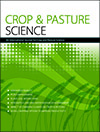CP20373Accelerated aging test of seed vigour for predicting field emergence of wet direct-seeded rice
 , D. S. de Z. Abeysiriwardena, J. W. Damunupola, F. R. Hay and N. S. Gama-Arachchige
, D. S. de Z. Abeysiriwardena, J. W. Damunupola, F. R. Hay and N. S. Gama-Arachchige
Seed vigour tests enable the detection of seedlots with high field emergence and storability. The present study was conducted to develop an accelerated aging (AA) protocol for seed vigour testing for wet direct-seeded rice. Accelerated aging treatment 43°C/72 h could predict field emergence and hence can be recommended as a vigour test for wet-direct seeded rice of intermediate bold grain type.




